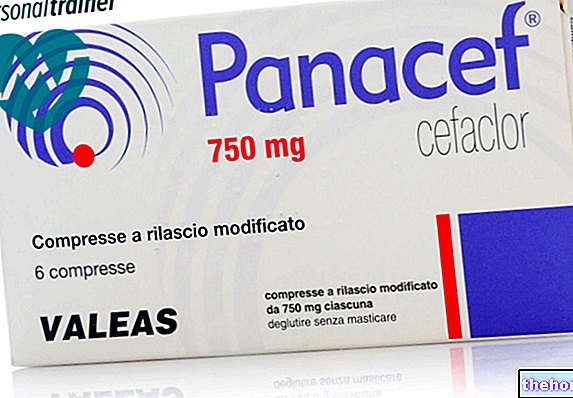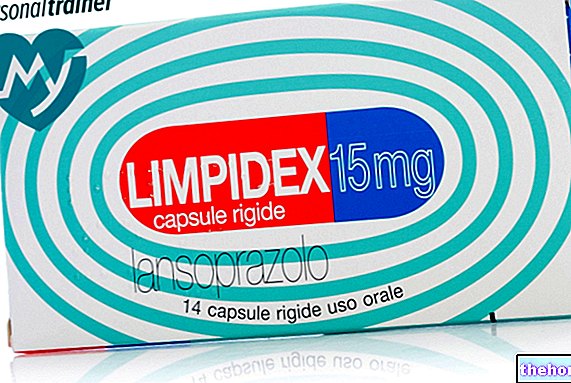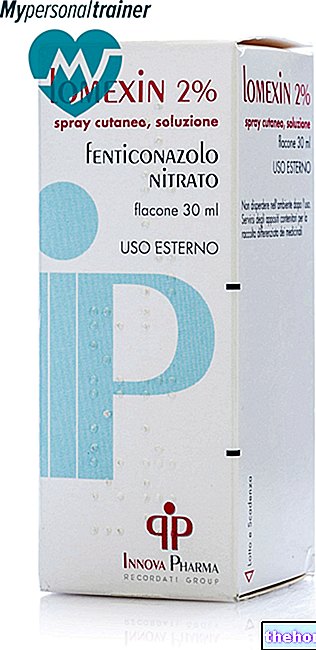Active ingredients: Betahistine
Jarapp 24 mg tablets
Indications Why is Jarapp used? What is it for?
Jarapp is a medicine used to treat symptoms of Ménière's syndrome, such as dizziness, ringing in the ears, hearing loss and nausea.
Contraindications When Jarapp should not be used
You don't use Jarapp
- if you are allergic to betahistine or any of the other ingredients of this medicine (listed in section 6)
- if you have pheochromocytoma, a rare tumor of the adrenal gland
- if you are under 18 years of age
Precautions for use What you need to know before taking Jarapp
Talk to your doctor or pharmacist before taking Jarapp
- if you have or have suffered in the past from a stomach ulcer (peptic ulcer)
- if you suffer from asthma
- if you have hives, rash or allergic cold, as these can get worse
- if you have low blood pressure
If you have any of the conditions listed above, consult your doctor to find out if you can take betahistine.
These patient groups should be monitored by a physician during treatment.
Interactions Which drugs or foods can change the effect of Jarapp
An "interaction means that medicines or substances, when taken at the same time, can affect the way each of them works or their side effects.
So far, no interactions have been observed between betahistine and other medicinal products.
Betahistine may affect the effect of antihistamines. Antihistamines are medicines used especially to treat allergies, such as hay fever, and car sickness. Consult your doctor or pharmacist if you are taking antihistamines (allergy medicines) at the same time.
Caution is advised in case of concomitant use of betahistine and MAO inhibitors. MAO inhibitors are medicines used in particular for the treatment of depression.
Tell your doctor or pharmacist if you are taking, have recently taken or might take any other medicines.
Warnings It is important to know that:
Pregnancy and breastfeeding
It is not known whether taking betahistine during pregnancy is safe. Therefore this medicine should not be used during pregnancy unless clearly needed.
It is not known whether betahistine is excreted in human milk. You should therefore discuss breastfeeding with your doctor who can help you decide what is best for you and your baby based on the benefits and risks associated with this medicine.
Ask your doctor or pharmacist for advice before taking this or any other medicine.
Driving and using machines
Betahistine has no or negligible influence on the ability to drive or use machines.
Jarapp contains lactose monohydrate
If you have been told by your doctor that you have an intolerance to some sugars, contact your doctor before taking this medicinal product.
Dose, Method and Time of Administration How to use Jarapp: Posology
Always take this medicine exactly as your doctor or pharmacist has told you. If in doubt, consult your doctor or pharmacist.
The recommended dose is:
Adults
From half a tablet to one tablet, twice a day. It may take up to 2 weeks before you notice any improvement.
How to take Jarapp
It is best to take the tablets with food.
If you forget to take Jarapp
Wait at the usual time for taking your next dose. Do not take a double dose to make up for a forgotten tablet.
If you have any further questions on the use of this medicine, ask your doctor or pharmacist.
Overdose What to do if you have taken too much Jarapp
If you have taken more than the prescribed dose, consult your doctor.
Symptoms of a betahistine overdose of up to 640 mg may be mild to moderate in intensity, such as nausea, sleepiness, vomiting, digestive disturbances, abdominal pain, and coordination disturbances. Higher doses of betahistine can cause more severe symptoms, such as seizures, heart and lung problems, and seizures.
Side Effects What are the side effects of Jarapp
Like all medicines, this medicine can cause side effects, although not everybody gets them. The following side effects may occur frequently (affecting up to 1 in 10 people):
Gastrointestinal disorders
- Nausea and dyspepsia
Nervous system
- Headache
The frequency of the following side effects is unknown:
Disorders of the immune system
- Hypersensitivity reactions such as a severe allergic reaction (anaphylaxis).
Skin disorders
- Hypersensitivity reactions (sometimes severe), especially swelling of the skin (angioneurotic edema), hives, rash, itching
Gastrointestinal disorders
- Gastrointestinal disorders.
- Mild gastrointestinal disturbances (eg vomiting, gastrointestinal pain, bloating, nausea, digestive disturbances) usually resolved by taking the medicine with meals. Alternatively, after consultation with your doctor, the dose may be reduced.
Nervous system disorders
- Drowsiness
If any of the side effects gets serious or if you notice any side effects not listed in this leaflet, please tell your doctor or pharmacist.
Reporting of side effects
If you get any side effects, talk to your doctor or pharmacist. This includes any possible side effects not listed in this leaflet. You can also report side effects directly via the national reporting system listed in Appendix V. By reporting side effects you can help provide more information on the safety of this medicine.
Expiry and Retention
Keep this medicine out of the sight and reach of children.
Do not use this medicine after the expiry date which is stated on the blister and carton after "EXP". The expiry date refers to the last day of the month.
Store Jarapp below 25ºC, in a dry place and in the original packaging.
Do not throw any medicines via wastewater or household waste. Ask your pharmacist how to throw away medicines you no longer use. This will help protect the environment.
Other information
What Jarapp contains
The active ingredient is betahistine dihydrochloride.
One tablet contains 24 mg of betahistine dihydrochloride.
The other ingredients are povidone, microcrystalline cellulose, lactose monohydrate, anhydrous colloidal silica, crospovidone and stearic acid.
Description of Jarapp's appearance and contents of the package
Round, biconvex, white to off-white tablet, scored on one side.
The tablet can be divided into equal halves.
Available in cardboard boxes of 20, 30, 40, 50, 60 or 100 tablets packed in blisters.
Not all pack sizes may be marketed.
Source Package Leaflet: AIFA (Italian Medicines Agency). Content published in January 2016. The information present may not be up-to-date.
To have access to the most up-to-date version, it is advisable to access the AIFA (Italian Medicines Agency) website. Disclaimer and useful information.
01.0 NAME OF THE MEDICINAL PRODUCT
JARAPP 24 MG TABLETS
02.0 QUALITATIVE AND QUANTITATIVE COMPOSITION
One tablet contains 24 mg of betahistine dihydrochloride.
Excipient with known effects:
One tablet contains 210 mg of lactose monohydrate.
For the full list of excipients, see section 6.1
03.0 PHARMACEUTICAL FORM
Tablet.
White to off-white, round, biconvex tablet, scored on one side. The tablet can be divided into equal halves.
04.0 CLINICAL INFORMATION
04.1 Therapeutic indications
Betahistine is indicated for the treatment of Ménière's syndrome, symptoms of which may include dizziness, tinnitus, hearing loss and nausea.
04.2 Posology and method of administration
Dosage
Adults (including the elderly):
12-24 mg twice a day, with meals.
The posology can be adjusted according to the needs of the individual patient. Sometimes it is possible to observe improvements only after a couple of weeks of treatment.
Pediatric population:
In children below 18 years of age the use of Jarapp tablets is not recommended due to insufficient data on safety and efficacy.
04.3 Contraindications
Hypersensitivity to the active substance or to any of the excipients listed in section 6.1.
Pheochromocytoma.
Since betahistine is a synthetic analogue of histamine, it can induce the release of catecholamines from the tumor, resulting in severe hypertension.
04.4 Special warnings and appropriate precautions for use
Caution is advised when treating patients with peptic ulcer or with a history of peptic ulceration due to the occasional dyspepsia seen in patients treated with betahistine.
Patients with bronchial asthma and a history of peptic ulcer should be carefully monitored during therapy.
Caution is advised when prescribing betahistine to patients with urticaria, rash or allergic rhinitis, due to the potential for worsening of these symptoms.
Caution is recommended in patients with severe hypotension.
Patients with rare hereditary problems of galactose intolerance, the Lapp lactase deficiency or glucose-galactose malabsorption should not take this medicine.
04.5 Interactions with other medicinal products and other forms of interaction
There are no known cases of dangerous interactions.
There is one report of an "interaction with ethanol and a compound containing pyrimethamine and dapsone and another of potentiating the effects of betahistine with salbutamol."
No interaction studies have been performed in vivo. Based on the data in vitro not expected, in vivo, an "inhibition of Cytochrome P450 enzymes.
The data in vitro indicate an "inhibition of betahistine metabolism by drugs that inhibit monoamine oxidase (MAO), including the MAO-B subtype (eg selegiline). Caution is advised when using betahistine and MAO inhibitors (including inhibitors) concurrently. selective MAO-B).
Since betahistine is a histamine analogue, Jarapp's interaction with antihistamines can theoretically affect the effectiveness of one of these medicines.
04.6 Pregnancy and breastfeeding
Pregnancy:
There are no adequate data on the use of betahistine in pregnancy.
Animal studies are insufficient to demonstrate effects on pregnancy, embryonal / fetal development, parturition and postnatal development (see section 5.3). The potential risk to humans is unknown. Jarapp should not be used during pregnancy unless clearly necessary.
Feeding time:
It is not known whether betahistine is excreted in human milk. There are no animal studies relating to the excretion of betahistine in milk. The importance of the drug to the mother must be weighed against the benefits of breastfeeding and the potential risks to the baby.
04.7 Effects on ability to drive and use machines
Betahistine is indicated for Ménière's disease and symptomatic vertigo. Both diseases may adversely affect the ability to drive and use machines. In clinical studies specifically conducted to investigate the ability to drive and use machines betahistine had no or negligible effect.
04.8 Undesirable effects
The following undesirable effects were observed at the frequencies listed below in patients treated with betahistine during placebo-controlled clinical trials [very common (≥ 1/10); common (≥ 1/100,
Gastrointestinal disorders
Common: nausea and dyspepsia
Nervous system disorders
Common: headache
In addition to the events reported in clinical trials, the following undesirable effects have been spontaneously reported during marketing and in the literature. A precise frequency cannot be estimated from the available data and is therefore classified as "not known".
Disorders of the immune system
Hypersensitivity reactions such as anaphylaxis.
Gastrointestinal disorders
Gastrointestinal disturbances have been reported.
Mild gastric disturbances (e.g. vomiting, gastrointestinal pain, abdominal distension and bloating). These can usually be resolved by taking the drug with meals or by reducing the dosage.
Skin and subcutaneous tissue disorders
Skin and subcutaneous hypersensitivity reactions, in particular angioneurotic edema, urticaria, rash and itching.
Nervous system disorders
Somnolence has been reported.
Reporting of suspected adverse reactions
Reporting of suspected adverse reactions occurring after authorization of the medicine is important as it allows continuous monitoring of the benefit / risk balance of the medicine. Healthcare professionals are asked to report any suspected adverse reactions via the national reporting system * .
04.9 Overdose
Few cases of overdose have been reported. Some patients have experienced mild to moderate symptoms (e.g. nausea, somnolence, abdominal pain) at doses up to 640 mg. More serious complications (e.g. seizures, pulmonary or cardiac complications) have been reported in cases of intentional overdose of betahistine especially in combination with other overdosed drugs. Treatment of overdose should include standard supportive measures.
05.0 PHARMACOLOGICAL PROPERTIES
05.1 Pharmacodynamic properties
Pharmacotherapeutic group: antivertigo preparations, ATC code: N07C A01
Betahistine's H1-agonist activity on histaminergic receptors of peripheral blood vessels has been demonstrated in humans by inhibition of betahistine-induced vasodilation by the histamine antagonist diphenhydramine. Betahistine has minimal effects on gastric acid secretion (one response). mediated by the H2 receptor).
The mechanism of action of betahistine in Ménière's syndrome is unclear. The efficacy of betahistine in the treatment of vertigo may be due to its ability to modify circulation in the inner ear or to a direct effect on neurons in the vestibular nuclei.
Single oral doses of betahistine, up to 32 mg in normal subjects, resulted in maximal suppression of induced vestibular nystagmus 3 to 4 hours after dosing; higher doses were shown to be more effective in reducing the duration of nystagmus. .
The permeability of the lung epithelium in humans is increased by betahistine. This resulted from a reduction in the clearance time of a radioactive marker from the lung to the blood. This action is prevented by oral pretreatment with terfenadine, a known H1 receptor blocker.
While histamine has positive inotropic effects on the heart, it is not known whether betahistine increases cardiac output and its vasodilating effect may cause a mild lowering of blood pressure in some patients.
Betahistine has little effect on the exocrine glands in humans.
05.2 Pharmacokinetic properties
Absorption
Betahistine is completely absorbed after oral administration and maximum plasma concentrations of 14C-labeled betahistine are reached in fasted subjects approximately 1 hour after oral intake.
Elimination
Elimination of betahistine occurs primarily by metabolism and the metabolites are subsequently eliminated primarily by renal excretion. 85-90% of the radioactivity of an 8 mg dose appears in the urine over 56 hours, with a maximum excretion being reached within 2 hours of taking. After oral administration of betahistine, its plasma levels are very low. Therefore, the evaluation of the pharmacokinetic parameters of betahistine is based on data relating to the plasma concentration of the 2-pyridylacetic acid metabolite alone.
Biotransformation
There is no evidence of presystemic metabolism and biliary excretion is not thought to be an important route of elimination of the drug or one of its metabolites. There is no or almost no binding to human plasma proteins; however, betahistine is subject to metabolism in the liver. Approximately 80-90% of the dose taken is excreted in the urine.
05.3 Preclinical safety data
Repeated dose toxicity studies in dogs lasting 6 months and 18 months in albino rats revealed no clinically relevant adverse effects at doses ranging from 2.5 to 120 mg / kg. Betahistine does not possess any mutagenic potential and there is no evidence of carcinogenicity in rats. Tests conducted on pregnant rabbits revealed no evidence of teratogenic effects.
06.0 PHARMACEUTICAL INFORMATION
06.1 Excipients
Povidone K90,
Microcrystalline cellulose,
Lactose monohydrate,
Anhydrous colloidal silica,
Crospovidone,
Stearic acid.
06.2 Incompatibility
Not relevant.
06.3 Period of validity
3 years
06.4 Special precautions for storage
Store below 25 ° C in the original package.
06.5 Nature of the immediate packaging and contents of the package
Aluminum / PVC / PVDC blister.
Available in packs of 20, 30, 40, 50, 60 and 100 tablets.
Not all pack sizes may be marketed.
06.6 Instructions for use and handling
No special instructions.
07.0 MARKETING AUTHORIZATION HOLDER
Alfa Wassermann S.p.A. Via E. Fermi 1, 65020 - Alanno (PE) - Italy
08.0 MARKETING AUTHORIZATION NUMBER
24 mg tablets 20 tablets in PVC / PVDC / AL blister - AIC 038836019
24 mg tablets 30 tablets in PVC / PVDC / AL blister - AIC 038836021
24 mg tablets 40 tablets in PVC / PVDC / AL blister - AIC 038836033
24 mg tablets 50 tablets in PVC / PVDC / AL blister - AIC 038836045
24 mg tablets 60 tablets in PVC / PVDC / AL blister - AIC 038836058
24 mg tablets 100 tablets in PVC / PVDC / AL blister - AIC 038836060
09.0 DATE OF FIRST AUTHORIZATION OR RENEWAL OF THE AUTHORIZATION
Date of first authorization: 10 April 2009
Date of most recent renewal: August 31, 2012




























